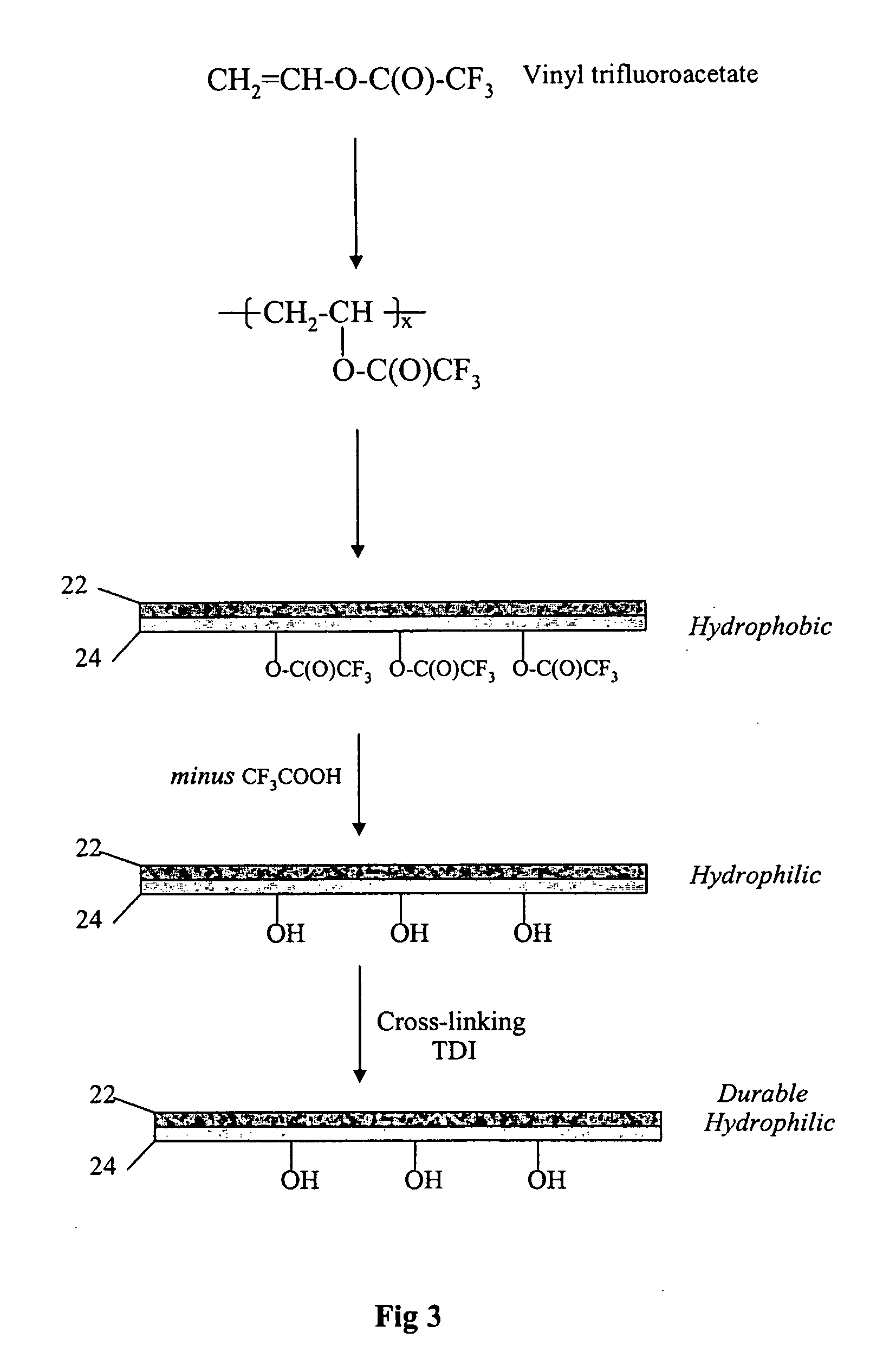Composite membrane having hydrophilic properties and method of manufacture
a porous membrane and hydrophilic technology, applied in the field of porous membranes, can solve the problems of unable to easily filter water through filters, high prewetting cost, and “gas-locking” or “dewetting”
- Summary
- Abstract
- Description
- Claims
- Application Information
AI Technical Summary
Benefits of technology
Problems solved by technology
Method used
Image
Examples
Embodiment Construction
[0013] A composite membrane having hydrophilic properties and a method of making the composite membrane are discussed in detail below. The composite membrane includes, in an exemplary embodiment, a porous base membrane having a plurality of pores and a coating applied to the base membrane using a densified gas, for example, a supercritical fluid or a near critical fluid, as a solvent. The coating is deposited onto the base membrane without blocking the pores of the membrane by changing the conditions of the supercritical fluid, for example, temperature and / or pressure. The coating used is selected to be compatible with the material of the base membrane and impart hydrophilic properties to the membrane. By compatible is meant that the coating material will “wet-out” the surface of the base membrane. The coating is crosslinked to improve adhesion and to provide that the composite article remains hydrophilic after at least 3 wet then dry cycles with no more than 10 percent of coating w...
PUM
| Property | Measurement | Unit |
|---|---|---|
| thickness | aaaaa | aaaaa |
| thickness | aaaaa | aaaaa |
| diameter | aaaaa | aaaaa |
Abstract
Description
Claims
Application Information
 Login to View More
Login to View More - R&D
- Intellectual Property
- Life Sciences
- Materials
- Tech Scout
- Unparalleled Data Quality
- Higher Quality Content
- 60% Fewer Hallucinations
Browse by: Latest US Patents, China's latest patents, Technical Efficacy Thesaurus, Application Domain, Technology Topic, Popular Technical Reports.
© 2025 PatSnap. All rights reserved.Legal|Privacy policy|Modern Slavery Act Transparency Statement|Sitemap|About US| Contact US: help@patsnap.com



